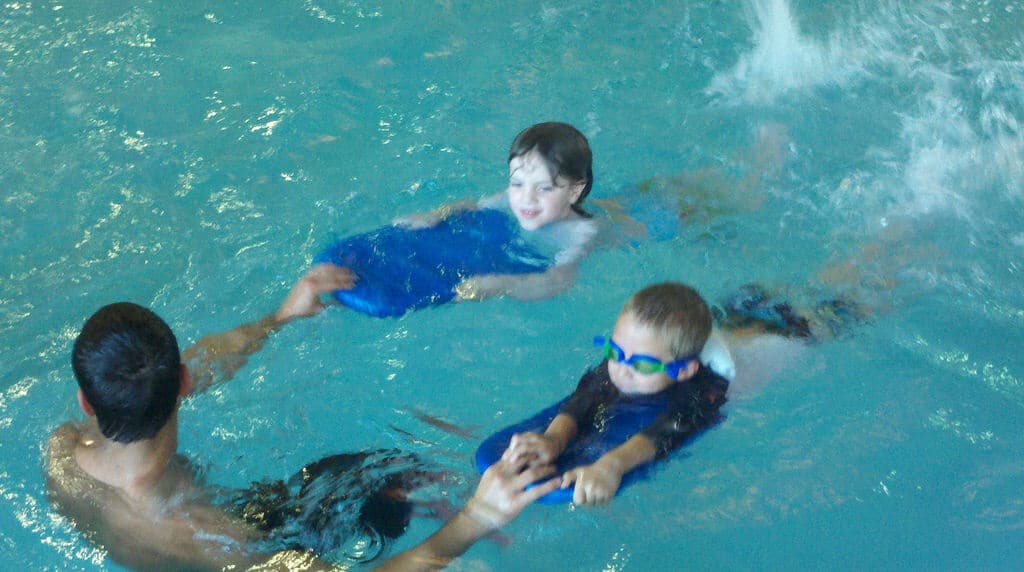
A Lack Of Skills
A report by the Amateur Swimming Association (ASA, 2014) has warned that nearly half of primary school children in England are not able to swim a length without aid. This is due to a lack of swimming lessons in over 1,000 primary schools, despite swimming being listed as an area of activity on the National Curriculum.
The results come as the national governing body for aquatics released its third annual School Swimming Census, focusing on the state of school swimming lessons with the aim of better understanding the uptake, barriers and difficulties faced by both educators and parents. The ASA suggest that primary schools allocated a minimum of 25 hours of study time per child in order for them to have sufficient opportunity to learn to swim unaided, and it is no surprise to hear that those schools who offer students more time in the pool gain better results. Yet at present, over 1,300 primaries offer no swimming provision at all at Key Stage 2.
Of the Primary PE and Sports Premium, currently 18% is being spent on swimming. However, the majority of this funding was spent on secondary costs such as transport and hiring of the facility, rather than the activity of swimming, and only 14% of the Sports Premium has gone towards the upskilling of teachers to enable them to teach school swimming competently.
A Hidden Subject
There is a clear communication barrier between schools and parents, with 40% reporting that they are unaware of their child’s ability or progress when it comes to water safety and their skills in swimming unaided. This is despite receiving regular updates in other National Curriculum subjects. Swimming therefore falls into the category of an ‘invisible’ activity, as if parents are not informed then it is difficult for them to actively engage with the education process. The same disconnect occurs during the transition from primary to secondary school, with no record made of a student’s swimming skills or lack there of. In the majority of cases the secondary schools have no idea of the level of swimming reached by their new students, which leaves the problem unresolved.
Swimming has a positive effect on the personal development of a child, and research has highlighted the increased sense of independence that a child gains in comparison to reaching other childhood milestones. The lack of skills has a secondary effect on the child’s sense of self-worth and capability, with the ASA research noting that nearly a quarter of children feel embarrassed about their lack of ability in the water. Respondents admitted they felt isolated when they were unable to join in with friends who were able to swim.
The Good News
Despite there still being a long journey ahead in reversing the above figures, there have been some promising improvements since the previous census was taken. In the last year, the numbers of children unable to swim 25 metres unaided has dropped from 51 to 45 per cent, and there has been some increase in both the average amount of swimming lessons made available in a school year, and the average amount of time spent in the water. The new revised National Curriculum for schools in England has also included swimming and water safety. This states that:
“All schools must provide swimming instructions either in Key Stage 1 or Key Stage 2. In particular, pupils should be taught to swim competently, confidently and proficiently over a distance of at least 25 meters, use a range of strokes effectively such as front crawl, backstroke and breaststroke and perform safe self-rescue in different water-based situations” (Department for Education, 2013).
Additionally, the ASA has established a School Swimming Charter that aims to support schools in meeting the new national curriculum. Swimming should be viewed as an essential life skill, potentially saving a child’s life, and the charter has been set up to help schools ensure that all students develop this ability. The charter encourages schools to monitor the current and ongoing swimming attainment levels in their school and then challenge the teaching provision by the local authority or pool if these levels are not satisfactory. It will motivate schools to improve the standards of swimming through the both the nomination of a School Swimming Champion who will work closely with the ASA, and the proper channelling of resources such as the Sports Premium. Additionally, schools will receive various resources to assist with the teaching of swimming and to recognise student progress.
These developments are certainly encouraging and hopefully the start of a trend towards continued improvement. The ASA note that if schools commit to taking the teaching of swimming seriously, an estimated 200,000 additional children would leave primary school with the ability to swim and develop a desire to continue an active life into adulthood.
References
- Amateur Swimming Association (2014) Taking School Swimming Seriously: The 2014 School Swimming Census. Leicestershire.
- Department for Education (2013) National curriculum in England: physical education programmes of study. London.
Photo: Peter and Joyce Grace


Responses